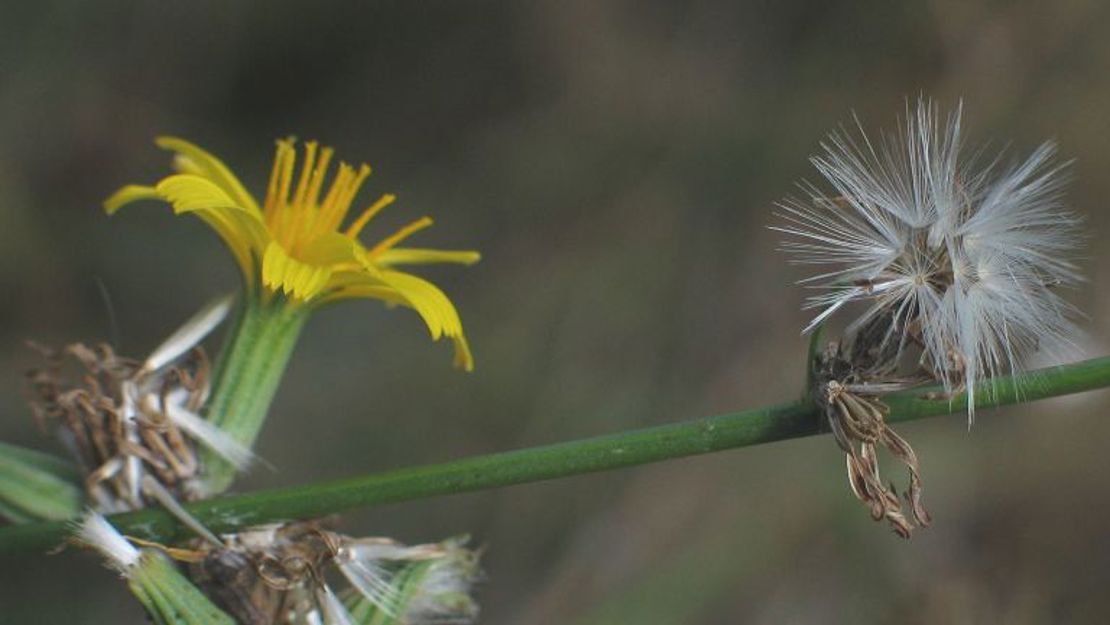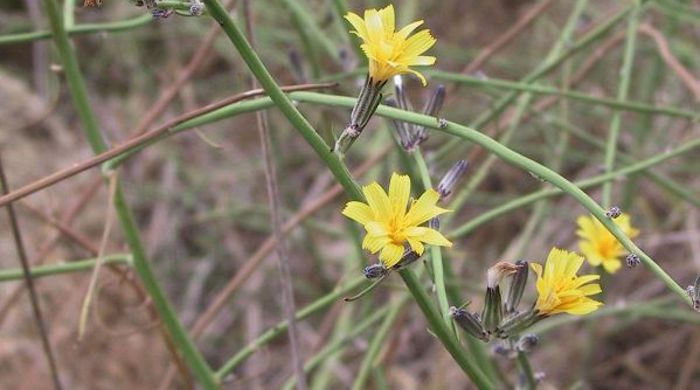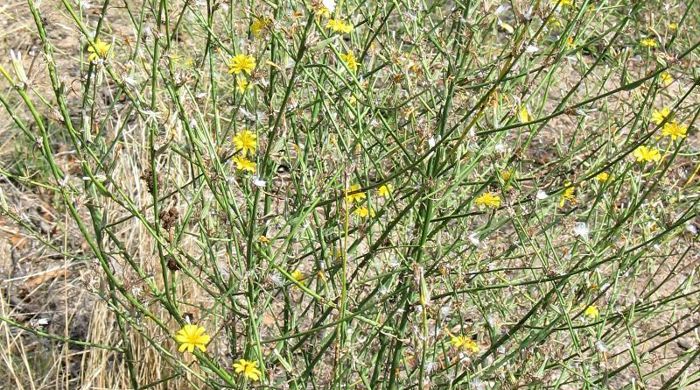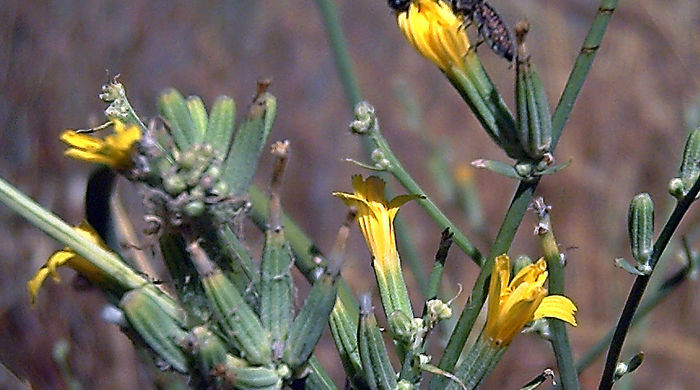Chondrilla juncea
Skeleton weed
Family: Asteraceae
Origin: Eurasia

Regional Pest Management Plan (RPMP) status
- Whole region — Sustained control
- Hauraki Gulf Controlled Area Notice pest
General description
Biennial or perennial herb < 80 cm tall. Taproot is deep. Leaves are < 10 x 2 cm and form basal rosette. Flowering stems are almost leafless. Flowerheads are yellow and borne in December – March. Achenes bear pappus and are borne in late summer – autumn.
What you need to know
To help protect our environment:
- You must not breed, distribute, release or sell skeleton weed within the Auckland region.
- You must not plant skeleton weed within the Auckland region, unless you are transferring an existing plant on your land to another location within the boundaries of the same property.
- You must destroy any skeleton weed on land that you occupy if it has been planted in breach of the above rules and you are directed to do so by an authorised person.
Habitats
Disturbed sites, roadsides, dry riverbanks, cropland, pasture, wasteland.
Dispersal
Seeds dispersed by wind and attachment to animal pelts. Vegetative spread from root fragments. Human-mediated dispersal through contamination of clothing and machinery.
Impact on environment
Potential to invade over-grazed pastures, vineyards and cereal crops.
Control
Site management
Maintaining good pasture cover can prevent establishment or suppress an infestation. Prevent overgrazing especially in summer. Other herbicides are available for selective use in pasture.
Recommended approaches
Physical control
Method: Dig or grub out at least the first 5cm of taproot.
Plant parts requiring disposal: Seeds.
Disposal options: Remove to greenwaste or landfill if practical.
Biocontrol
Biocontrol is currently not available for this species.
Community agrichemical control recommendations
No qualifications: Foliar spray with 100ml glyphosate green per 10L of water.
Certified Handler/Experienced agrichemical user: Foliar spray with 100ml glyphosate green per 10L of water and 20ml penetrant.
Caution: When using any herbicide or pesticide please read the label thoroughly to ensure that all instructions and safety requirements are followed.






